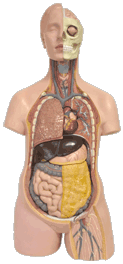At WiseGEEK, we're committed to delivering accurate, trustworthy information. Our expert-authored content is rigorously fact-checked and sourced from credible authorities. Discover how we uphold the highest standards in providing you with reliable knowledge.
What Is the Difference between mRNA and tRNA?
Messenger-ribonucleic acid and transfer-ribonucleic acid (mRNA and tRNA) are two of the nucleic acids involved in the production of proteins necessary to conduct cellular life. They consist of strands of nucleic bases that are ordered by the information encoded in the structure of the cell’s ribonucleic acid (RNA) or deoxyribonucleic acid (DNA), the molecules responsible for harboring the genetic information passed from one generation to the next. The mRNA’s function is to encode for enzymes, which are proteins that inhibit or promote reactions. The compositions of structural proteins that make up tissues are also encoded by mRNA. The tRNA meanwhile acts as the collector of the necessary amino acids and transfers them to the protein undergoing synthesis.
Proteins are chains of amino acids called polypeptides. Humans have 20 different kinds of amino acids, which, when assembled, make thousands of different proteins. RNA is composed of four nucleic acid bases: adenine, uracil, cytosine, and guanine (A, U, C, and G). Each group of three adjacent bases on the mRNA molecules comprises a codon, making 64 different codes possible (four bases raised to the third power). The mRNA and tRNA can form temporary bonds across the codon by matching each mRNA base to its opposite: A with U and G with C.

Enzymatic and structural proteins must be copied from the cellular genetic information exactly. Miscoding a protein is one source of mutation within a cell. The information for protein synthesis is copied from the genetic DNA or RNA into a new mRNA molecule. The mRNA moves outside the nucleus and temporarily binds with ribosomal ribonucleic acid (rRNA) embedded in a tiny structure called a ribosome. A ribosome is the site of new protein synthesis.
Working together, mRNA and tRNA ensure that the order of these amino acids is correct. While mRNA is held by the rRNA at the ribosome, the next three nucleic acid bases, representing the next codon, are exposed. The amino acids previously assembled are held nearby by another site on the ribosome.
The nucleic acid tRNA consists of a reactive site, called the anticodon, which matches its opposite codon on the mRNA. At one end of the tRNA is the desired amino acid. The mRNA and tRNA temporarily bind at the codon site, allowing the amino acid on the tRNA to get close enough to the previous amino acid to form a peptide bond. The tRNA is then freed and the ribosome moves on to the next codon on the mRNA.
With each transfer of an amino acid by the tRNA, the polypeptide chain gets longer. A special codon, called a stop codon, marks the end of the assembly process, and the polypeptide chain is released. The chain is now called a protein. The mRNA and tRNA molecules are recycled or broken down by enzymes for their nucleic acid content and used again in the synthesis of fresh mRNA.
AS FEATURED ON:
AS FEATURED ON:










Discuss this Article
Post your comments